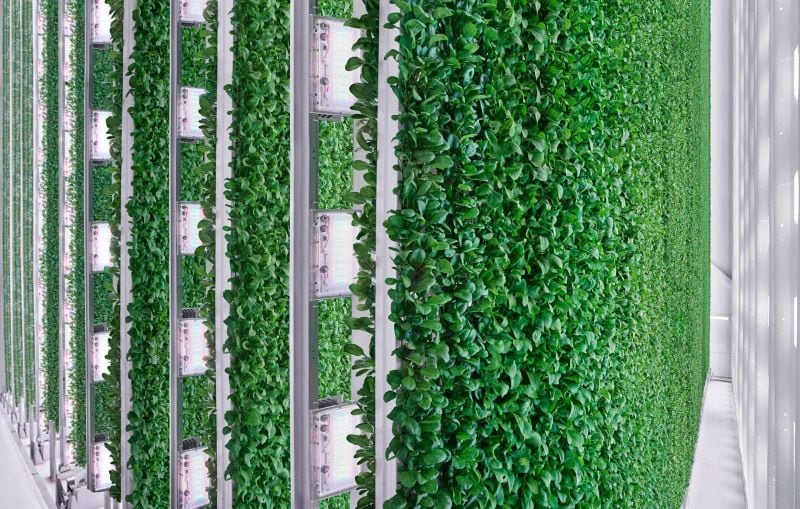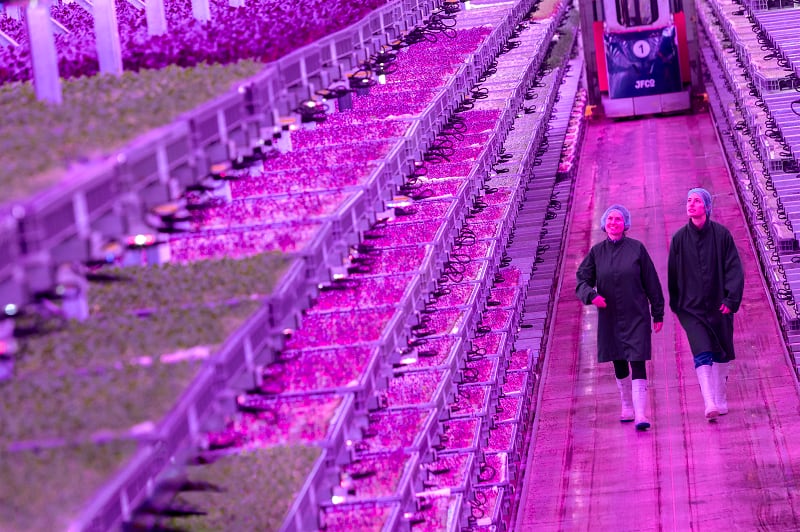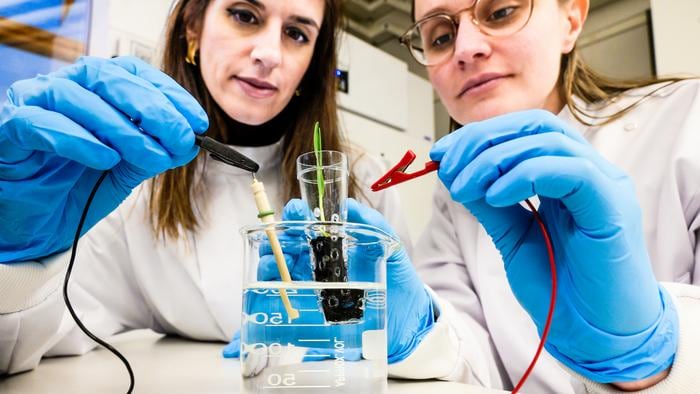Investors have hardly given up on vertical farming yet, as the recent successes of Oishii, Jones Food Company and Intelligent Growth Solutions testify. But Storey is nevertheless keen to set out what differentiates the US vertical farming company.
Last year, he wrote a notorious post predicting a shakeout between ‘stacked tray’ vertical farms and ‘truly vertical’ farms. Speaking with AgTechNavigator, he stressed he wasn’t attempting to “besmirch the entire industry”, before immediately doubling down on the fighting talk. The post, he said, “was simply to say Plenty is different, and here’s why we think we win long term”.
Plenty’s approach, he explained, is based on growing in 3-D (on both sides) of vertical towers. That’s in contrast to most, who use a horizontal ‘stacked trays’. The Plenty solution is more energy efficient than horizontally vertically stacked shelves, says Storey, because the air can circulate freely, allowing natural convection to carry heat up and away, rather than trapping it between horizontal shelves.
More light equals more yeild
Stacked trays are therefore a ‘fundamentally different’ design approach compared to the one that Plenty has taken, according to Storey. “My criticism isn’t necessarily intended to put down other businesses or put down the industry as a whole,” he continued. “But we’ve seen a number of high-profile failures in this space lately and it feels very important that we differentiate ourselves, simply because we took a fundamentally different design approach from the beginning.”
Growing on both sides of vertical towers, meanwhile, means Plenty can use more intense lighting: more light equals more photosynthesis, which equals more yield.
Many would argue that vertical farmers have overcome the heat issue through hydronic lighting. But Plenty insists the more power it uses versus conventional or greenhouse growing contributes to higher yields. It has also successfully grown more than 50 crops. “What we’re doing is as different from the greenhouse as racing go-carts is to racing f1. It’s an entirely different scenario in terms of the power we are pumping into the pant and the amount of yeild we are deriving as a result.
“So that steers the entire design focus of our farms and says we are focused on more of like a plant manufacturing process than say the traditional growing process. We are looking for plants that will produce under high light conditions vigorously.”
To date, Plenty has raised over US$940 million from investors including Softbank and Walmart. “We’ve spent the money designing something that we think is futureproof,” Storey said, “and that we think will be the cream that rises to the surface in terms of productivity, and something that will work almost anywhere in the world growing any crop.”




